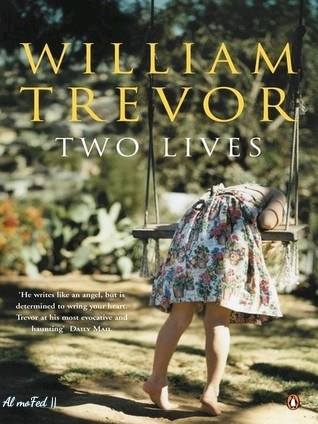In Two Lives William Trevor offers two stories -
Reading Turgenev and My House In Umbria. they're not mere stories, however, and skim like substantial novellas. Both have women as central characters. Reading Turgenev features Mary Louise Dallon, an Irish Protestant whose parents support her decision to marry, though on the surface a minimum of the match could also be but perfect. In My House In Umbria someone who claims to be called Emily Delahunty relates her chequered personal history against a backdrop of wholly unpredicted events that change the lives of all she invites to her house. In both stories, William Trevor examines a niche which may exist between reality lived, reality recalled and reality imagined. Writers create apparently fictitious worlds which, when embraced by characters who themselves also are fictitious, approach desired realities much closer than reality, itself.
 |
| Two Lives by William Trevor |
Mary Louise Dallon may be a girl in an almost frighteningly normal Irish Protestant household. There are visits to the cinema and suitors of varied ages and kinds , and work which can always be local and doubtless predictable. Predictable, that is, until someone does something rather unexpected. Mary Louise Dallon does do the unexpected. Reading Turgenev thus examines the results , predictable and otherwise, of this departure from the expected norm. And, of course, the Turgenev that gets read is itself fiction. But, for Mary Louise its imagined world becomes perhaps more important than the strange reality that surrounds her. people that share her life ignore the truth or, when it doesn't suit their bias, they recreate it almost as their own fiction. The effect on Mary Louise is devastating, or perhaps the results were inevitable, products of her own mis-interpretations or mis-understanding of reality. As a result, Reading Turgenev becomes an almost viscerally moving experience, where real violence is completed to the central character without a finger ever being raised in threat. It's all through with words. And eventually, those words are themselves a fiction.
My House In Umbria features a writer who is understood as Emily Delahunty. The name could be unlikely. Perhaps much of what she relates about herself is of an equivalent ilk. She has been here and there - Idaho, Africa, Umbria, English towns. She has suffered parental confusion and doubtless abuse, has been exploited within the USA and has been in business in Africa. But then, she is additionally a creator of romantic, perhaps sentimental fiction. An apparently random event brings about equally chance encounters when people that seem to wish each other congregate in Emily's house in Umbria. Throughout she confuses real events with those of her own fiction. there's no denying reality, but this will even be created. She is clearly presenting to others her own version of reality that's far away from the frame of a confident older woman during which she casts herself. Which version of reality will provoke belief?
Throughout William Trevor's book the important joy is that the author's resplendent prose. It surprises. It decorates, it twists, turns and celebrates. These fictional characters become completely real. Utterly credible, despite their propensity to measure in imagined worlds. the general concept is stunning. The detail is devilish, the results of those fictions apparently real.


Comments: 0
Post a Comment